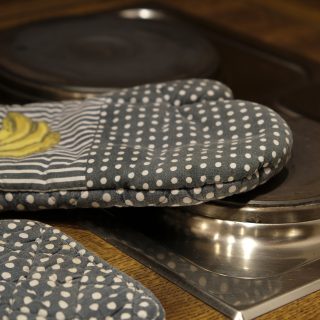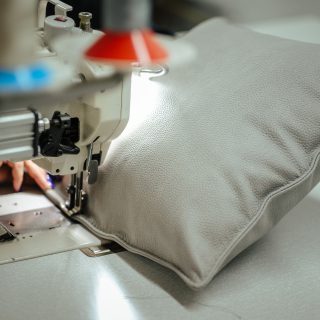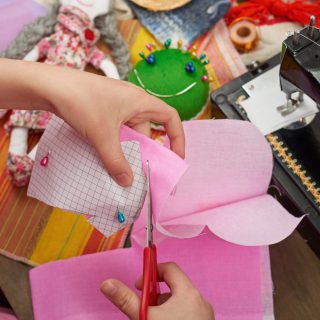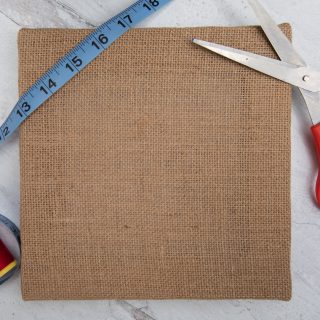Perhaps you’ve started with a sewing project and either realized too late that you don’t have a zipper foot, or more frustratingly, yours just broke. And now you’re wondering: can you sew a zipper without a zipper foot?
Well, the answer is – yes! The only purpose of the foot is to keep the fabric still against the feed dog, so you wouldn’t have to move it to make stitches.
The thing is, there are certain (usually cheaper ones) sewing machines that come without a presser foot, while the more expensive ones are usually fully equipped.
However, even if you own the more expensive machine, it doesn’t mean that your zipper foot is going to serve you forever. These things can break, and you’ll either need to replace them or learn to live without them.
Before zipper feet became a thing, sewists had to find a way to sew zippers using plain feet. Many people still do it like that today. Of course, the zipper foot makes it easier to achieve a professional look, but with a little bit of practice, you can achieve results good enough without it as well.
A regular foot every machine has will make your zipper a bit less smooth, and it may take some time for you to get used to using it. However, the more you try, the better you’ll get, just like everything else in life.
In this article, I have prepared a detailed guide for you on how to sew without a zipper foot. If you follow it precisely step-by-step, I’m sure you’ll get a hold of how to do it in no time!
How to Sew a Zipper without a Zipper Foot
Suppose getting a zipper foot for a simpler and smoother procedure isn’t an option for you, or you don’t want to stress yourself out by attaching the presser foot to the machine, as it’s a pretty complicated procedure. In that case, you can simply follow my tutorial on sewing a zipper without a zipper foot.
The first thing to do is begin on the zipper’s right side. You need to pull the head of the zipper up close to the end of the right side and start sewing. Sew all the way until you reach the zipper’s bottom right side.
Make sure to use a double stitch so that the zipper is locked.
When you’re sure that everything is properly in its place, it’s time to move towards the zipper’s left side.
Before you start to sew on the left side, make sure that your zipper is pinned and placed in line with the right side. Then, unzip it and begin with sewing while at the same time you keep pulling upward.
When you reach the button on the upper side, pull the zipper’s head off. Then sew until you get to the bottom end of the zipper.
While you still have the needle as part of your project, lift up the presser foot, turn the zipper, and start sewing.
When you are finished, make a double stitch that goes through the zipper.
That’s it. Your zipper is good to use.
Should I Consider Getting a Zipper Foot?
Before answering this question with a simple yes or no, you should take a moment to think about a couple of things, such as your most common sewing projects and your future plans for sewing projects.
Besides making the zipper sewing much easier and smoother, the zipper foot is also good for giving it a rather professional finish.
A typical zipper foot design allows you to make a clean stitch that is very close to the teeth of the zipper.
Although a universal sewing machine foot is also fine for properly installing a zipper, it is actually more difficult. It might result in a messy stitch or an unevenly sewn zipper. Another thing that can easily happen is that your stitch ends up far away from the edge of the teeth, resulting in a too visible zipper.
All of these issues can be avoided by using a zipper foot. If you are an experienced professional in sewing, it might not be that important to use a zipper foot, as you are probably able to achieve perfect results by other means. However, those of you who are less confident in your sewing skills will definitely find it easier to sew a zipper with a zipper foot, as you can avoid a lot of hassle.
How to Sew with a Zipper Foot?
If you decide to opt for a zipper foot, you need to do to reap its benefits.
First, baste your zipper opening and make sure that you are sewing along the edges in the place where the zipper should remain. Make your seam allowance the same way as the rest of your garment, so make sure you get that right.
Then, open up the seam allowance pieces as much as you can and keep them as flat as possible. It’s important to do this well, as you want to ensure that the basting stitch folding on each side is coming out smoothly and nicely.
Use pins to keep your zipper in place. First, install it precisely to its position. Then, put the top of the zipper in such a position that makes sure that the garment’s top line is below the pull.
Then, use the machine to baste the zipper to the project. This stitch should only be used to make sure that your zipper stays in the right place. After the zipper is fixed, you should remove this stitch. This basting stitch is very important because you use it to make sure that the teeth of the zipper are placed centered on the seam and that they are acting as sort of a guide. This is necessary because the zipper is not really visible to you as you sew over the right side of the project.
Now, flip the entire project so that the right side of the fabric is facing upwards. If you complete this step in a proper way, the zipper’s upper end should be the only visible thing that sticks on the upper side of your sewing project. The rest should be hidden.
Now, the moment you’ve been waiting for: the zipper foot. Use it to make a topstitch on the seam through the layers of fabric. Since some rippling could occur here, to avoid it, make sure thst you are sewing from the bottom to the top on any side of the zipper. Also, you should make sure that you stitches are near the center of the seam, despite the fact that the zipper foot will also help you with this.
Finish your zipper sewing by putting a line of stitches at the bottom of the seam. This will give an endpoint for your zipper that will ensure that the pull doesn’t go all the way down.
Now, remove the basting stitches are we mentioned before with a seam ripper. Take out those stitches that kept the zipper still in place. Once you remove those, you can keep removing the other stitches, those that go down to the middle of your seam. The middle stitch removal should make the teeth of your zipper visible.
Finally, test the zipper. If everything is fine, it should smoothly open and close.
If you want to purchase a separate zipper foot, here are some recommendations.
AC Sewing Zipper Feet
This package involves one zip foot and one invisible foot that can be used on all top Singers, Babylock, Brothers, and many other machines. If your machine can support this foot, all you need to do is fit it to the holder so that you can change and use any foot without the assistance of a screwdriver.The invisible zipper foot will allow you to make some very beautiful and precisely sewn hidden zippers with not much effort.
Dreamstitch
This one also works with a variety of sewing machines of different generations. It is a huge helper for those machines that have no or have just a little bit of customization for the position of the needle. The zipper foot is adjustable and equipped so that it has a screw to change the position of the presser foot with regards to the needle position. All you need to do is move the screw so that it’s adjusted for the desired position.It is also possible to customize the zipper seam width by aligning the zipper teeth to run against the foot’s side.
Final Word
I hope you found my guide for sewing a zipper without a zipper foot useful. In case you decide to purchase a zipper foot for smoother work, you can also consult the rest of this guide. Zipper feet for sure make the sewing easier, but in case you are aware that you won’t often use it, and you’re also an experienced and skilled sewist, it may also be unnecessary to use it.
Last update on 2025-07-06 / Affiliate links / Images from Amazon Product Advertising API






